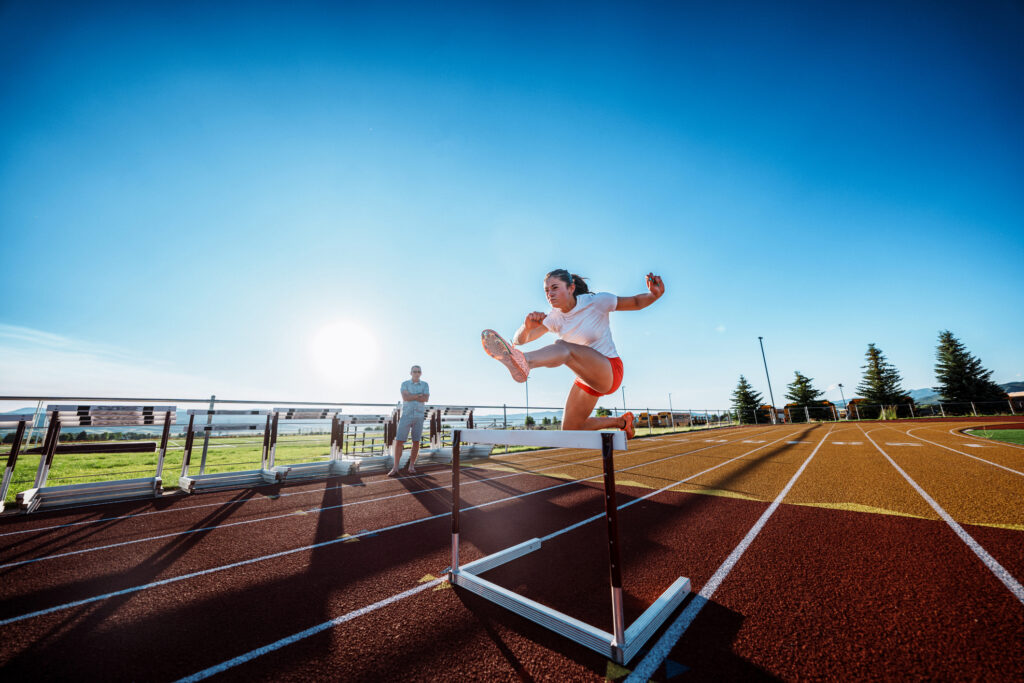The National Collegiate Athletic Association (NCAA) is the premier landscape for amateur athletics in the United States. Contrary to the notion that sport participation in the United States is equitable, it has been observed that college sport participation is more prevalent among individuals with specific geographic, social, and financial advantages. This disparity in participation may disproportionately influence injury management and associated recovery trajectories, particularly among those from a lower socioeconomic status who have a serious head injury. A recent epidemiological study demonstrated that sport-related concussions, a mild traumatic brain injury, are prevalent in NCAA sport. Moreover, several studies have reported that sport-related concussion outcomes are influenced by biopsychosocial factors and social determinants of health. Accordingly, we sought to examine the intersection of the race of the NCAA student-athlete across household income and sport participation. We also examined the association between the race of the NCAA student-athlete and sport-related concussion recovery characterized as time to normal academic performance and return to play.
Our study, published in the December 2023 issue of Medicine & Science in Sports & Exercise®, leveraged data collected as part of the Concussion Assessment, Research, and Education (CARE) Consortium. The CARE Consortium is a 30-site, prospective cohort study aimed at characterizing the short- and long-term effects of sport-related concussions in NCAA student-athletes and military service academy members. Participants were administered routinely used clinical concussion assessments prior to the competitive season and at discrete clinically relevant timepoints (within 48 hours, at the initiation and completion of the return to play protocol) following sport-related concussions.
We found that across NCAA men’s and women’s sports, white-identifying athletes disproportionately participated (~75%) in all sports except for men’s and women’s basketball, and men’s football. Student-athletes in these same sports more often reported having come from households with a median income less than $60,000. This distribution is in stark contrast to NCAA sports such as men’s and women’s lacrosse and ice hockey, where student athletes came from households with a median income that was greater than $150,000.
Across sport-related concussion recovery trajectories, we found that the race of student-athletes was not associated with time to normal academic performance or initiation of the return to play protocol. However, it appears that non-Black/white student-athletes (compared to white student-athletes) may be at a lower risk of completing the return-to-play protocol, suggesting a slower recovery or more cautious management. Additionally, Black student-athletes (compared to white student-athletes) were associated with an increased risk of being cleared for unrestricted return to play, which might indicate a quicker recovery or accelerated management. These findings highlight the need for further investigation into the underlying factors that contribute to these disparities. Regardless of the underpinnings of these findings, implementing return-to-learn and play protocols that consider individual recovery rates is the clinical gold standard.
Despite a relatively homogenous NCAA student-athlete composition, our study suggests that self-identified race of the student-athlete appears to have marginal, and likely non-clinically impactful, associations with sport-related concussion recovery. It may then be reasoned that within the 30 schools sampled across the nearly 1,100 NCAA schools/universities that equitable sport-related concussion management is being performed. Despite this observation, we still acknowledge there will be NCAA student-athletes who suffer from implicit biases and further work is needed to elucidate those patterns to establish mechanisms for student-athletes to utilize when they feel their care is being mismanaged.

Adrian J. Boltz, MSH, is a Ph.D. student in the Michigan Concussion Center at the University of Michigan in Ann Arbor, Michigan, and the research associate for the National Collegiate Athletic Association Injury Surveillance Program at the Datalys Center for Sports Injury Research and Prevention. His research encompasses both sports injury epidemiology and sport-related concussion. Specifically, he is interested in understanding factors associated with sleep disturbance following sport-related concussion leveraging clinical measure, neuroimaging, and fluid biomarker data. He also serves as member of ACSM’s Exhibits Advisory Committee.
Conflict of Interest Disclosure: Adrian J. Boltz is currently working (or has worked) on projects funded by the National Collegiate Athletic Association, Department of Defense, National Athletic Trainer’s Association, and National Operating Committee on Standards for Athletic Equipment.
Viewpoints presented in ACSM Bulletin commentaries reflect opinions of the authors and do not necessarily represent positions or policies of ACSM. Active Voice authors who have received financial or other considerations from a commercial entity associated with their topic must disclose such relationships at the time they accept an invitation to write for the ACSM Bulletin.




